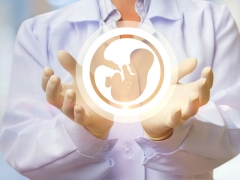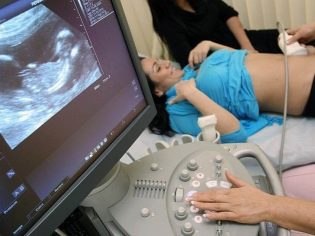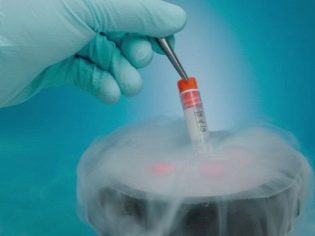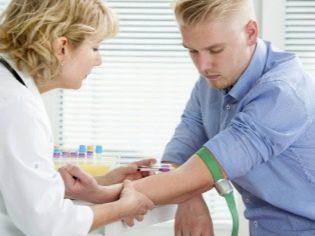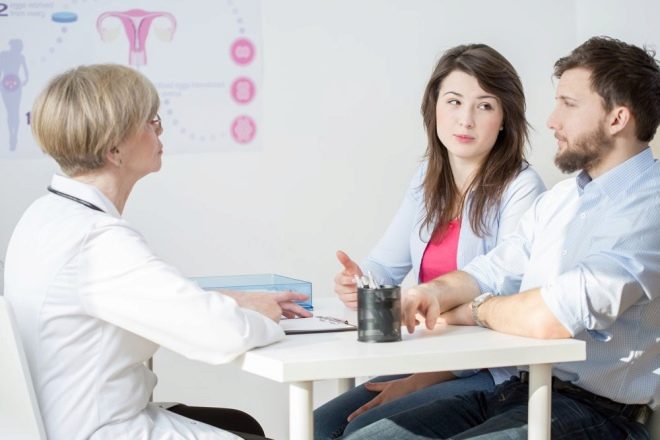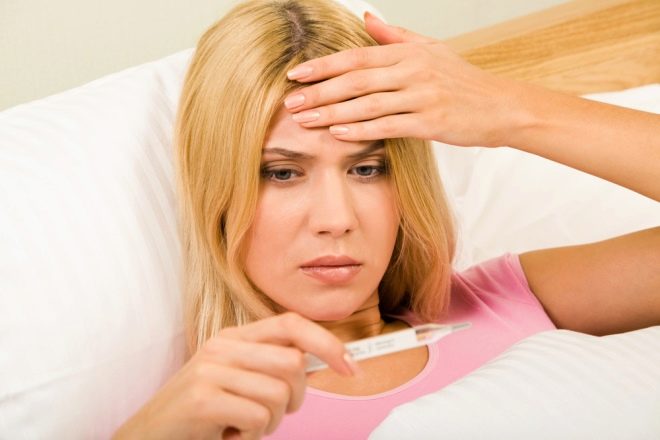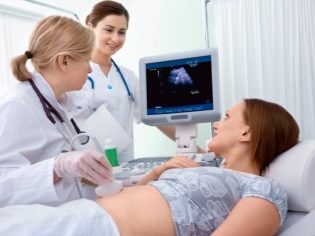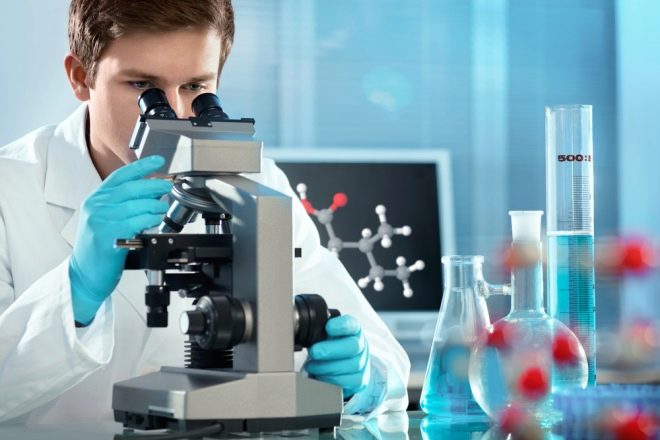What is IVF and how does it occur? What are the features of the procedure and pregnancy?
A few decades ago, the children from the "tube" seemed something of the category of fiction. Today, more than 5 million people live on the planet, the conception of which and the very fact of existence were made possible by IVF. What this method is about, how it goes, how effective it is and how dangerous it is, we will tell in this article.
What it is?
IVF stands for in vitro fertilization. This means that the process of fertilization itself does not occur within the female body, as is the case with natural conception, but outside of it in the external environment. Then the fertilized eggs are transferred to the uterus of the woman, and she bears a child and gives birth to it.
IVF (IVF - in vitro fertilization) - the last chance for couples with severe or total forms of infertility. If earlier they didn’t have much choice - they could only reconcile with childlessness or raise foster children, now even in critical cases, medicine is ready to offer a way out and help spouses become parents.
To study the methods of extraction of eggs and their fertilization with sperm in the laboratory began in the middle of the last century. But significant success was achieved only in 1978, when the first girl was born in the UK who was conceived in a test tube. Louise Brown is now 40 years old, she is a good specialist and a great mother - she has children that she conceived naturally.
In the USSR, the first successful IVF protocol took place in 1985. In Moscow, and then in Leningrad, two children were born, conceived in a test tube and then placed to their mothers, a girl and a boy. In 2010, the ECO program was recognized at the state level and is included in the program for the development of demography by a presidential decree. She began to be given quotas, in vitro fertilization according to indications can now be done under the policy of compulsory medical insurance.
Since then, thousands of IVF protocols have been held annually in Russia, many families have found happiness to become parents and raise their own relatives in blood and genetics of children. IVF is done in all regions, many clinics, both private and public, provide such services in quotas and on a paid basis.
IVF implies fertilization of the female egg by the sperm of the husband or donor in a special incubator with a nutrient medium. Both the cells and the resulting embryos go through the “quality” control, and only then the best categories of embryos are hooked into the woman’s womb. Whether they will take root is a big question, the procedure of in vitro fertilization does not give any guarantees that the pregnancy will come. The success of the procedure depends not only on the doctors, but also on the health and age of the expectant mother, as well as on the banal luck.
IVF is not a panacea for infertility, but a real chance for a happy ending.
Kinds
There are several types of IVF reproductive methods. Do not confuse them with insemination, when the sperm is injected into the uterus of a woman, and conception occurs inside her body. All types of IVF imply fertilization in the environment. Depending on the reproductive health of the couple in medicine, there are several ways to help them become parents.
- IVF with own egg and husband's sperm. This method involves the use of fertilization only biological materials of the spouses.
- IVF with a donor egg. This method is used if the woman does not produce her own oocytes, the ovaries are missing or not functioning.
- IVF with donor sperm. This method is recommended if infertility is caused by the male factor and it is not treatable by other therapeutic methods. If a man does not have a single spermatozoon alive and suitable for fertilization, a donor’s biomaterial can be offered to the woman.
- IVF surrogacy. Such an IVF can be done with both your own and donor germ cells, but the surrogate mother will carry the baby for the couple. This is important when a woman does not have the ability to endure pregnancy and have a baby on her own - there is no uterus, labor and gestation are contraindicated by age, and so on.
- IVF with cryomaterial. Such protocols imply the use of native or donor frozen oocytes, sperm or embryos. The method is widely distributed and approved by the Ministry of Health, since it has many advantages over stimulated attempts, during which women have to take huge doses of hormonal drugs.
- ICSI. Artificial insemination with simultaneous ICSI is indicated for severe forms of male infertility, when doctors have no choice but to introduce one healthy sperm cell (if there is one in the ejaculate) with a needle into the egg cell.
In addition, IVF is different and process. Most often in our country and in the world the so-called stimulated protocol is applied. During it, doctors using hormones achieve superovulation - the maturation of several follicles, get several eggs for fertilization. This method shows better results than others.
Sometimes fertilization is carried out in the natural cycle. In this case, the ovaries do not stimulate, hormones are not prescribed. Everything proceeds more naturally and naturally, but the effectiveness of the method is lower, because you can only get one or two eggs, which reduces the chances of successful fertilization and the onset of pregnancy.
Which method to choose, which way to go, decides the fertility doctor. It is he who, on the basis of analyzes and surveys, is able to evaluate all possible risks, predictions and complications and propose the best protocol in each specific case. Universal successful protocols do not exist - everything is purely individual.
Indications and contraindications
The main indication for IVF is male and female infertility, and sometimes mutual, which cannot be eliminated by other methods of treatment. And also IVF is acceptable for couples or single women if they wish, with absolutely any form of infertility. This regulates the order of the Ministry of Health from 30.08.2012.
It is important that the spouses do not have circumstances that are contraindicated for prescribing IVF. Like any high-tech intervention, in vitro fertilization has its own nuances. The list of contraindications is also stipulated by the order of the Ministry of Health.
IVF will be refused if:
- a woman has a mental illness that can prevent childbearing and childbirth;
- in severe chronic diseases in which pregnancy and childbirth can be a mortal danger for a woman;
- congenital malformations of the uterus, injuries, changes, absence of the uterus (possibly only IVF, followed by surrogate motherhood);
- ovarian tumors, uterus requiring treatment;
- acute inflammatory processes in any organ or system;
- oncological diseases.
IVF is not contraindicated in any case for a man, because even with severe male infertility in medicine there are opportunities to get at least some healthy sperm for fertilization under a microscope.
Upon detection of contraindications, the couple is imposed a temporary or permanent ban on IVF. In case of uterine myoma, it is recommended to undergo treatment first, including surgical treatment, and in case of polycystic ovary the prohibition will also be temporary.
The final and irrevocable prohibition can be imposed only in case of anomalies of the uterus anatomy.
Stages - from beginning to end
Pregnancy planning with IVF is a rather lengthy process that requires a lot of attention to detail from the couple and the doctor. There are no trifles here. It is necessary to start preparing for IVF in advance, as the result of the procedure often depends on it. Below we describe how each stage of IVF passes in more detail.
Training
In order for the couple to be admitted to IVF, it is not enough not to have contraindications, it is necessary 3-4 months before the intended treatment of infertility to start collecting the necessary documents and certificates.
A woman undergoes a gynecological examination without fail - she does ultrasound of the pelvic organs, colposcopy and hysteroscopy. She tests smears from the genital tract for microflora and infection. On different days of the menstrual cycle (starting from the 5th day after the beginning of the menstrual period) a large list of hormonal profile tests should be taken - it is important for the doctor to know what hormones and how much is produced in the patient's body. The levels of prolactin, testosterone, estrogen, estradiol, FSH and LH and other substances are investigated, without a normal ratio of which the onset of pregnancy and its course may become impossible.
A woman gives a large list of blood tests - for HIV and syphilis, for the group and Rh factor, for clotting, general and biochemical analysis, analysis for so-called TORCH infections (rubella, toxoplasmosis, cytomegalovirus infection, herpes of the first and second types. And also An immunological blood test for antibodies to sexually transmitted infections must be done.
For a man, if it is planned that his sperm will be used for fertilization, it is necessary to re-make a spermogram beforehand, and then again before entering into the protocol. This analysis allows us to establish quantitative and qualitative indicators of the ejaculate, to assess the structure and viability of its germ cells. In addition, the man does a chest X-ray, blood tests for HIV and syphilis, hepatitis B and C, and also smears the urethra on the microflora and genital infections.
Together, the partners undergo all the necessary general analyzes, the list of which is standard and regulated by the order of the Ministry of Health. If the wife is over 35 years old, and the man is over 40 years old, you will definitely need genetic counseling, as well as tests for the karyotype and genetic compatibility of the partners.
It should be remembered that all certificates have their own validity period. After the end of the examination, the woman receives a therapist's opinion on the admission to the IVF procedure. This certificate will be valid for a year.
If during the examination, problems, diseases, infections are identified, the couple will have to be treated first.
Approximately three months before the planned IVF, a man and a woman should begin a course of taking drugs that improve the quality of germ cells. The scheme includes vitamins and dietary supplements. And also the couple should lead a healthy lifestyle, eliminate the harmful effects of nicotine and alcohol, do not visit the bath, sauna, do not wear cramped clothes that interfere with the normal blood supply to the genitals.
As soon as the preparatory stage is completed, and the spouses are allowed to join the ECO protocol, they will have to sign the agreement and agree to the procedure.Please note - in the standard contract it is always stated that payment for each stage should be made in advance if IVF is charged. The consent to the procedure also stipulates a ban on unprotected sex throughout the entire protocol. Only condoms are allowed for contraception.
Beginning of the protocol
The protocol is entered 10-12 days before the start of the next menstruation. On these dates, the couple needs to come to their reproductive doctor and provide all the documents and analyzes, as well as the contract and written consent to the procedure. A woman is given a control ultrasound scan and is given an individual list of appointments. It is with him that she will have to come to each reception from this moment.
On the first day, the type of protocol and the first appointments are entered into the list. If the protocol is long, then hormonal stimulation can already be started a couple of weeks before menstruation. If the protocol is short, then treatment, drugs, dosage will be scheduled for the period after the end of the next menstruation.
Upon entry into the protocol, the couple is explained that medical treatment can be interrupted for medical reasons at any stage, and only those funds that were paid for the failed stage will be returned to the couple, the rest of the money for the procedures already performed will not be returned.
In IVF under the OMS policy, the couple are explained with a list of the analyzes that they have to do for a fee, since not all of them are “covered” by the OMS means.
Ovarian stimulation
With a long protocol, which is most often used in Russian medical practice, they begin to stimulate the ovaries before the next menstruation. During this period, hormonal drugs inhibit ovarian function. So is the preparation of the sex glands to the main stimulation. Then drugs are prescribed that should promote the growth of a larger number of follicles. The more eggs can be obtained, the higher the probability of pregnancy.
Without stimulation, a woman produces one mature egg, quite rarely two. When stimulated with drugs in a woman, 15–20 oocytes can mature at the same time. To stimulate the ovaries most often prescribe such drugs as "Puregon", "Orgalutran", "Menopur", "Meriofert", "Decapeptil" and others. The use of these drugs is permissible at home. They are administered either intramuscularly or subcutaneously (a shot in the abdomen), many women follow the recommendations of the doctor themselves.
During stimulation, a woman visits a doctor, tests blood for hormone levels, and also undergos an ultrasound of the ovaries several times to assess the response of the sex glands to stimulation. If it is excessive, reduce the dose, if the answer is insufficient, increase. As soon as the follicles with maturing eggs reach 16-20 mm, a single injection of hCG is made. This allows eggs to ripen. After this injection, eggs can be harvested after 34-36 hours.
During stimulation, there may be headaches, weight gain, nausea, nagging pain in the lower abdomen and lower back.
At this stage, it is important to prevent PIR - ovarian depletion syndrome, which occurs as a result of hyperstimulation of the sex glands.
Egg collection, puncture
Mature oocytes are collected by the puncture method. The long needle is inserted transvaginally into the follicles, from where the follicular fluid is pumped out with the eggs present in it. The accuracy of the manipulation is controlled by an ultrasound transducer. The procedure is performed under general anesthesia. Anesthetic is administered by the anesthesiologist intravenously.
The resulting contents of the follicles are immediately transferred to special containers and sent to the embryology laboratory. There, the eggs will be freed from follicular fluid and placed in Petri dishes with a nutrient medium.
The puncture lasts no more than 15 minutes. After the procedure, the woman remains in the clinic under medical supervision for another 2.5-3 hours. If there are no complications, she is allowed to go home. 12 hours before the puncture it is forbidden to take food, for 6-8 hours it is not recommended to drink water and other liquids, on the eve of manipulation sex is not recommended.
The procedure that occurs in a small operating room, you can not come with makeup, contact lenses, jewelry and jewelry.
After the puncture on the same day, progesterone preparations are prescribed in the stimulated protocol. They are necessary to maintain the function of the corpus luteum, which is formed at the site of punctured follicles. If IVF is planned to be carried out with donor eggs or with own, but frozen in advance eggs, take progesterone drugs from 14-15 days of the menstrual cycle.
This support helps bring the endometrium of the uterus to a loose state, in which subsequent implantation will be easier. After puncture, short non-abundant bleeding is possible, as well as pulling pain in the lower back and lower abdomen to the right and left. Normally, they pass in a day.
Sperm production
When the oocytes are obtained, sperm is delivered to the embryology laboratory. A fresh portion of the man must pass on the same day. Usually, sperm is produced by masturbation. In some forms of male infertility, independent ejaculation is impossible, or the ejaculate does not contain live spermatozoa. In this case, the collection of germ cells is also carried out under general anesthesia. Depending on the individual indications, either a testicular biopsy or aspiration of the epididymis is performed.
If there are indications for surgical collection of sperm, the procedure takes place on the same day when the wife is punctured by the ovaries. The resulting sperm is delivered to the laboratory, freed from seminal fluid, and then the most healthy and mobile are selected from the total number of germ cells.
Fertilization and embryo cultivation
The process of fertilization is carried out by embryologists. Selected best oocytes are first kept in a nutrient solution for 4-5 hours, after which you can begin fertilization. This crucial process itself can be carried out in two main ways. In the first case, concentrated sperm is added to the Petri dish with oocytes, which has already undergone preliminary cleaning and primary screening. In the second case, the method of intracytoplasmic injection of spermatozoa (ICSI) is used.
If there is a need to use frozen eggs or sperm, then they are thawed beforehand and examined for integrity and viability. Cryoprotocols are not inferior in efficiency to fertilization with native (fresh) germ cells.
With IVF in the cup, about 100 thousand spermatozoa should fall on each egg cell. With ICSI, the only sperm is injected "manually." It is possible to understand whether fertilization has occurred in 2-4 hours. After 16 hours, changes become apparent at the cellular level and can already be detected with powerful microscopes. The final conclusion on whether oocytes are fertilized is done in a day.
They are counted and given a primary assessment. If the egg cell is not fertilized in the dish, ICSI is recommended, however, this significantly increases the cost of the protocol. A fertilized egg is called a zygote. On the first day, it has only 1 cell, on the second - already four, on the third - 8, on the fourth - 16-20, and on the fifth - from 40 to 200 cells.
On the second day of cultivation, the first assessment of the viability of the embryos is carried out. Already at the stage of zygote, doctors can detect hereditary diseases, defects. Prior to transfer, only high-quality embryos will be allowed.
On days 5-6, the embryo becomes blastocyst. It is believed that at this stage embryos take root better. But the final question about the transfer date is decided on an individual basis. Planting can be carried out on any day from 2 days of cultivation to 6 days.
At the stage of pre-implantation diagnosis, embryologists, if there is a prescription for genetics, determine the sex of the embryos. This is done only if the spouses are carriers of diseases that are genetically linked to the sex chromosome, for example, hemophilia. In this case, only embryos of a certain sex are planted, which will not suffer from a serious illness. The rest of the pairs of embryos are not defined and not disclosed, this is prohibited by law.
As soon as the diagnosis is completed, the spouses are invited to transfer.
Embryo transfer, replanting
Embryos that have been cultivated for five days have a higher chance of successfully implanting; when replanting, there is no need for a large number of transferred embryos. When replanting “two-days” or “three-days”, there are higher risks that the embryos will not take root, therefore, 2-3 embryos are injected into the woman's uterus.
Spouses are shown pictures of the resulting blastocysts with a detailed embryological description of them and offer to make a choice - how many embryos will be planted. If they managed to get more than three, doctors can offer cryopreservation of embryos remaining after transfer.
Frozen embryos that will be stored in a cryobank may later be reused by the pair, for example, if they want more children, or for re-protocol in case the first fails.
Legally, spouses have the opportunity not only to leave embryos for storage (for some money), but also to give them as donor to other couples who want to have children, as well as to pass on to the needs of science for study and experiments. The decision is not appealable and is signed.
When all the formalities are settled, the woman is escorted to the small operating room. In the gynecological chair, the doctor inserts the necessary number of embryos through the catheter into the uterine cavity. The procedure is painless and quick. After that, for an hour, the woman remains in a calm, fixed position, not moving. Then she is given recommendations for the next stage and is allowed to go home.
Implantation period
After embryo transfer for the woman and her spouse comes the most difficult period - waiting. In the first days after transplanting, the woman is at the hospital. She is advised to lie more, rest, get enough sleep, eat full and worry less. Taking a hot bath, swimming and lifting weights while waiting for implantation is strictly prohibited.
A woman must comply with all the recommendations of the doctor, take hormonal drugs in the required dosages to support the pregnancy, if it takes place. Sex is contraindicated, it is also impossible to masturbate and experience an orgasm in any other way, because the tension of the uterine muscles that accompanies the female orgasm can prevent the implantation of the ovum into the functional layer of the endometrium.
It is not necessary to wait for the special symptoms and signs of pregnancy, since implantation after IVF often occurs much later than with natural conception. On average, it is considered quite normal if implantation occurs at 3-8 days after embryo transfer into the uterine cavity.
Implantation bleeding, which manifests itself as a few drops of scanty bloody or serous discharge at the moment of attachment of the ovum, is not at all and not always, moreover, it is difficult to notice implantation bleeding after the replanting of the frequently occurring daubs.
Indirectly, the first symptoms can include an increase in body temperature a week or more after transplantation. She rises in the evenings or in the afternoon, and at first it may seem to a woman that she has caught a cold and is sick.
However, only timely diagnosis of pregnancy can be a reliable confirmation of the successful IVF protocol.
Has a pregnancy occurred?
Diagnosis of the “interesting situation” after IVF has its own characteristics. So, the test strips that women usually love so much are not suitable in this case, because the patient received long-term hormonal treatment, she was given an injection of HCG, and therefore the test can show a false positive result.
The most reliable and trustworthy way to find out if the in vitro fertilization protocol is successful is the hCG blood test. It is recommended to begin to do it from 14 days after embryo grafting. If the implantation is successful, an increased concentration of this hormone will be detected in the woman’s blood. If not one baby was implanted, but two or three at once, the level of the hormone increased in proportion to the number of fruits.
If the hormone is detected, but its level is too small, the woman is asked to come back in several days and donate blood. This will help to understand whether the pregnancy is developing, or whether an ectopic, missed abortion, miscarriage occurred at the earliest time.
On the 21st day after embryo grafting, the first ultrasound is usually performed. It will help to confirm the data of laboratory tests. And after another 10 days, a second ultrasound is performed, which allows the viability of the fetus to be established. The period of pregnancy after IVF is considered, as in normal pregnancy, that is, at the time of the first ultrasound (21 days after the transfer), the woman is already five weeks pregnant.
The second ultrasound completely completes the successful IVF protocol. A woman is given an extract about the treatment carried out and is sent to the antenatal clinic at the place of residence in order to get on the dispensary account.
IVF Repeat
If it is necessary to do a repeated IVF, the couple will again have to collect all examinations and do tests. By quota it is allowed to do IVF no more than once a year. For their own money, a couple may repeat the protocols more often. When preparing for re-fertilization, if not half a year has passed, some tests from those collected earlier will still be relevant.
Usually repeated IVF after a cycle with hormone stimulation is recommended to be done only 3 months after the first. This time is necessary to conduct a thorough examination and identify the causes of unsuccessful IVF in the previous protocol. If a woman has been fertilized without prior and subsequent stimulation with hormones, a second attempt can be made next month.
If the pregnancy has occurred, but ended in failure (miscarriage, missed abortion, ectopic pregnancy), the woman, after appropriate treatment and examination, is recommended to wait 5-6 months before planning a new protocol.
Donor IVF
In vitro fertilization with donor biological materials has its own characteristics. If you plan to use a donor egg, it is quite difficult to choose a donor yourself. A woman should be completely healthy, she should have children conceived and born naturally, the donor and the recipient should match each other according to blood type and Rh factor, and also have a certain external similarity, because a child who is carried by one woman will on the other, its biological mother. A donor cannot be a blood relative of a man whose sperm is planned to be used for the IVF procedure.
The donor passes all the necessary tests and enters the donor program. He is an individual donor, his family pays for his services.
If a woman is offered a donor egg from a cryobank, the donor is anonymous, the family will be able to receive only general information about it - age, occupation, eye color, hair, body size, weight, height. All donor eggs in the cryobank were carefully examined and only the best of the best were selected.
Donor sperm is also under strict control, for six months after being handed over, it is in quarantine until tests are received confirming that the donor has no genital infections, HIV and other diseases. Sperm donors - men of reproductive age with a completely healthy and normal spermogram. Future parents will also receive only general information about their donor - height, weight, skin color and eyes, race, age, occupation.
Protocols with donor biomaterials cost the family much more.
Efficiency and results
The expensive and rather complicated IVF technique, alas, does not have high efficiency. According to statistics in Russia, only about 35-45% of protocols end in success. End the pregnancy and successfully give birth to only 80% of women whose protocol was successful. The fact that there are no guarantees of pregnancy is written in the contract on the provision of medical services, and patients are informed about this at the preparatory stage for IVF.
No more than a third of women, according to the Ministry of Health, became pregnant at the first attempt. However, with repeated protocols, the likelihood of a long-awaited pregnancy increases significantly. Approximately 10% - in the case of the second protocol and the same - in the third attempt.
Starting from Protocol 4, the effectiveness decreases, the predicted probability of pregnancy decreases, but this does not prevent some women from making 6 or 7 or more attempts, one of which is necessarily successful.
In 60% of cases of replanting two or more embryos, multiple pregnancy occurs. The number of boys and girls conceived using IVF is about the same, but after ICSI, girls are more likely to be born, although the difference is small - 51% of girls versus 49% of boys.
Couples who managed to get pregnant the first time, quite often decide to re-IVF after a few years. But the success of the protocol for the first time does not guarantee the same efficiency during the second attempt.
Not so rarely, after the first unsuccessful IVF protocol, a woman becomes pregnant surprisingly to everyone in a completely natural way. This happens in 25% of failed protocols. Hormone therapy “launches” more intensive processes in the body, the female reproductive system is rebuilt and begins to work at full capacity, therefore, in some cases, pregnancy becomes quite possible without repeated in vitro fertilization.
The younger the woman, the more likely the onset of pregnancy is in the IVF protocol. The optimal age, when the chances of pregnancy are quite high, is the age of 30 years. High chances and women up to 35 years. After 35, the probability of becoming pregnant in the first protocol is reduced to 30%, and at 40 they are estimated to be no higher than 20%. After 43 years, the chances are no more than 6-8%. However, stories are known facts when women could become pregnant through IVF even at the age of 50.
The better the health status of the woman, the higher the probability of success in the IVF protocol. Previously performed abortions, endometriosis, fibroids, uterine scars as a consequence of experienced surgeries reduce the chances of successful implantation.
Repeated protocols with cryomaterial - frozen eggs, embryos or spermatozoa - do not demonstrate higher efficiency than protocols with fresh eggs and spermatozoa. Their effectiveness is on par.
But IVF protocols in the natural cycle without hormonal support usually show lower and rare positive results than attempts with stimulation.
Pregnancy and childbirth after IVF
The approach to pregnancy, which originated from IVF, should be completely different, not the same as during a natural pregnancy.And it's not that carrying a baby (or babies) is significantly different, just a woman who has long struggled with infertility, most likely, has a lot of related problems, which became the original cause of infertility.
Due to age and illness, carrying a baby after IVF becomes more risky.
In the first trimester of pregnancy, women have a high probability of spontaneous abortion, miscarriage, fading of pregnancy. According to various estimates, it is about 30-60%. Women after IVF are often pregnant with twins or triplets, which is an additional risk factor. In addition, by the end of the first trimester, when the placenta begins to function in future mothers, women after IVF quite often detect malformations of the placenta, anomalies of its location (presentation, abruption, premature aging).
The risk of miscarriage and create hormones that took a woman at the stage of stimulation of the ovaries, and then after embryo replanting. They not only change the balance of power in the future mother’s endocrine system, but also often act as a factor that provokes the aggravation of old chronic diseases, which in the early stages does not contribute to the carrying of a baby.
In the second half of the second trimester and in the third trimester, women who bear a child conceived “in vitro” increase the likelihood of developing preeclampsia, as well as all the complications associated with it. The frequency of preterm labor is about 25-36%.
That is why from the moment of registration a woman will come to her obstetrician-gynecologist much more often than other future mothers will do. And also she will have to take more tests and more often pass certain examinations.
Carrying a baby after IVF requires a woman’s responsibility and a great desire to give birth to this child. You will only have to eat right, as the doctor will say, you will have to take pills and vitamins strictly on schedule, at any time you need to be ready to go to the hospital for the preservation of pregnancy without a word.
Without complications, pregnancy after IVF occurs in about a third of future moms, who used the methods of reproductive care. More safely bear the child and give birth to children of the woman who did IVF about the male factor of infertility.
Childbirth can be both natural and with surgery.
The second option is most preferable, and most women are prescribed a planned cesarean section in order not to risk the life of the mother and baby, because the birth process after IVF can also proceed with deviations and complications.
Causes of unsuccessful IVF
Unfortunately, it is not always possible to find out the true causes of the fiasco, but to try to do this is necessary. Sometimes the causes can be eliminated, and the doctor simply needs to change the type of protocol, change the drug or dosage, so that the long-awaited pregnancy will occur. The most common causes of implantation are the following:
- age;
- high concentrations of follicle-stimulating hormone;
- a small number of eggs obtained;
- small amount of embryos obtained during laboratory fertilization;
- poor germ quality.
Among the internal causes that most often prevent the onset of pregnancy after embryo transfer, the following can be noted:
- endometriosis;
- other endometrial disorders;
- hydrosalpinx;
- genetic incompatibility of partners;
- overweight, obesity;
- unsatisfactory sperm quality.
Bad habits (smoking, drinking alcohol) reduce the likelihood that embryos will take root. Even passive smoking is dangerous. Often the reason for the failure lies in the immune processes - the woman's body at the level of immunity rejects the fertilized egg, even if he managed to implant.
Experiences, stress, anxiety, emotional instability, conflicts at home and at work increase the likelihood of disturbance in the production of sex hormones by stress hormones, as a result of implantation may not take place, or the fertilized egg will be rejected as soon as possible.
ECO-children - what are they?
Babies conceived in a test tube are no different at birth from their peers born after natural conception. However, popular rumor stubbornly prescribes differences for them, and a couple who are planning IVF may simply be frightened by those improbable rumors that are in the community around eco-kids. The most frightening of them concerns the reproductive abilities of the child himself.
For some reason, it is believed that the "eco-friendly" child will definitely be fruitless when she grows up. Children who were conceived in this way about 30-40 years ago confirmed by personal example that this was not the case. Infertility is inherited only when it carries genetic causes. In 99% of couples resorting to in vitro fertilization, it is acquired, so it can not be inherited by children.
If genetic infertility is known, a geneticist will know about it at the stage of preparing the pair for IVF, a protocol with donor sperm or egg will be proposed to the couple. Many genetic pathologies can be tracked by embryologists during pre-implantation diagnosis. In addition, the true primary infertility is quite rare.
The second hearing concerns the health and longevity of babies conceived in a laboratory test tube. There is a difference, indeed, but obviously not for the worse. Due to the preliminary selection of only high-quality germ cells and diagnosis, only the strongest embryos sit down before embryo transfer. Therefore, many pediatricians say that the "ekoshny" children are stronger and more enduring, they are less likely to get sick, recover faster.
Congenital malformations in children conceived in an IVF protocol are found in medical practice 45% less frequently than in normal children. Sometimes such babies develop with the advancement of the development calendar. They are desired, loved ones, parents gave a lot of things so that the little ones would have them, therefore they are usually engaged in their development with particular diligence.
On the life expectancy of eco-kids say is quite difficult. The first girl, born thanks to fertility specialists, recently celebrated her 40th birthday. She doesn’t complain about her health, raise her children, so it’s more correct to return to the question of life expectancy in another 50-60 years. Then the statistics will be complete and comprehensive.
Some fear the attitude of religion to IVF. The most strict to this reproductive method are Catholics and Orthodox. The former do not take IVF in any form or form, under any conditions. The latter only recently made an important caveat - IVF has the right to exist only if the couple makes him out of despair, if other treatment showed no effect, if fertilization is performed only using the spouses' own germ cells, and doctors do not destroy the remaining embryos.
The surrogate motherhood, donor spermatozoa and egg cells are not approved by the Orthodox Church, as it believes that this violates the sacrament and immunity of the Orthodox marriage between a man and a woman.
In Islam, the requirements are almost the same - donor biomaterials are unacceptable, as is surrogate motherhood. But resection of extra embryos, as well as the disregard of extra embryos until their natural death is not considered infanticide, since Muslims believe that the child’s soul only appears in 4 months of pregnancy mothers, brought her angels.
Some restrictions on IVF impose and the Jews. They are generally not against procreation, and even encourage it, but prohibit surrogate motherhood, if a close relative becomes a surrogate mother.
For the rest in Israel to barren couples, the state pays for IVF in full to the extent necessary until the spouses have two children.
The most loyal are the Buddhists. They sincerely believe that to achieve happiness, all methods are good if they, naturally, do not prevent others from being happy too. Therefore, in Buddhism, any type of IVF is considered acceptable if all the participants end up satisfied with the result and can become happy.
People who claim that an eco-child does not have a soul, that he is a “spawn”, most often have to do with certain sects that are destructive and rather aggressive in themselves.
But there are also isolated cases of personal rejection of IVF and among representatives of official denominations. Thus, the problems that Orthodox parents sometimes face may concern the refusal of a particular priest to baptize a child born through IVF.
This problem has a solution - you just need to find another, more adequate priest who is well aware of the latest recommendations of the ROC regarding IVF.
Complications and risks after IVF
The main complication after IVF can be considered the consequences of hormonal stimulation. According to some reports, after several stimulated attempts from the woman, the ovaries are depleted more quickly, menopause sooner occurs. The relationship of IVF with cancer has not been proven. Rather, on the contrary, practicing oncologists and most of the world's scientists are sure that malignant tumors in the female body are not provoked by IVF. According to statistics, cancer develops mainly in those who have a primary examination did not reveal the beginning process, and hormone therapy accelerated tumor growth.
If a woman before IVF was completely healthy, and the blood test for tumor markers did not show abnormalities, then you should not be afraid of cancer. The life expectancy of women spent IVF also does not affect, because the early menopause, even if it starts, the allotted years of life does not shorten.
Theoretically, complications can occur at any stage of IVF - during stimulation, hyperstimulation syndrome may occur, which can lead to ovarian depletion, there are many such stories on Beiplan. During ovarian puncture, an infection may join, bleeding may occur, a recurrence of chronic diseases may develop after replanting, but the likelihood of such complications is very small.
Endocrine disorders, which in the female body are caused by aggressive hormonal stimulation of the ovaries, are easily eliminated, it is enough to visit an endocrinologist after birth and undergo corrective treatment.
Vascular problems, cardiomyopathy, which also theoretically can occur after IVF, are fairly easy to correct by visiting a therapist and a cardiologist.
The best opportunity to weigh all the possible risks before an IVF procedure is to talk to a doctor who will tell you about all the remote and urgent consequences known to science that may occur after a protocol and a successful pregnancy.
Cost of
Even IVF under the OMS policy does not guarantee that the couple will not have additional costs. During the survey, tests that are not included in the MHI program will be assigned, for example, spermogram. The couple will have to make them at their own expense. As a result, the amount will not come out so small, but not so large, as if the couple did in vitro fertilization entirely at their own expense.
The cost of one IVF protocol includes basic tests and examinations, preparation, stimulation, puncture, embryological studies and selection, transfer and support of pregnancy during the first month after transplantation. Cryopreservation of eggs or embryos remaining after the protocol is paid separately. Donor germ cells and embryos are paid for separately, if necessary.
Some clinics for promotional purposes indicate only the price of individual stages, for example, only ovarian stimulation or only embryo transfer. You should specify the full cost of the program, if the price seems suspiciously low. In Russia in 2018, on average IVF costs from 150 thousand rubles.
You shouldn't assume that IVF will be cheaper for you in foreign clinics, this service is much more expensive thereFor example, in Spain, this price is on average five times higher than in Russia, and in Germany’s clinics - three times.
The cost of IVF with a donor egg costs 250-300 thousand rubles. Donor sperm will be cheaper by half. Prices for the full program vary depending on the selected drug accompaniment, depending on the need to carry out pre-implantation diagnostics (it increases the cost of the protocol by almost 40-80 thousand rubles).
The highest prices are observed in Moscow and the northern capital - on average, from 180 to 260 thousand rubles for the IVF program, including medicines. In Volgograd and Voronezh, the average cost is from 150 to 200 thousand. In the Volga region, the cost starts from 120 thousand and reaches 180 thousand rubles.
Reviews
According to reviews, IVF gives a chance to become parents, and many women and men go through not one, not two, or even three attempts, so that their son or daughter is born. Reviews of those who got pregnant get the first time, only positive.
Women who, despite several punctures, haven’t managed to get pregnant yet, are looking for reasons in themselves and the clinic, often leaning towards the decision to change the clinic and the attending physician. This, indeed, often works - The new specialist re-evaluates the patient's history and selects a new, in fact, protocol that turns out to be more successful than all previous ones.
Women who did IVF under the OMS policy often report less attentive treatment of medical staff in many clinics, regardless of the form of ownership of the health care institution. The protocol is planned in a hurry, is carried out in the same way, the patients are put on stream, and the doctor simply does not have time to thoroughly delve into the personal circumstances of each of her patients.
Among the shortcomings of the woman indicate the high cost of reproductive care, as well as heavy psychological sediment, which remains in the case of an unsuccessful attempt to cope with depression without the professional help of a psychotherapist or psychologist is sometimes almost impossible. Some stages, for example, stimulation, most women endure quite hard, and at the stage of waiting for the result they often experience fear and panic attacks.
Interesting information about IVF, see the next issue of the program "School of Doctor Komarovsky."
